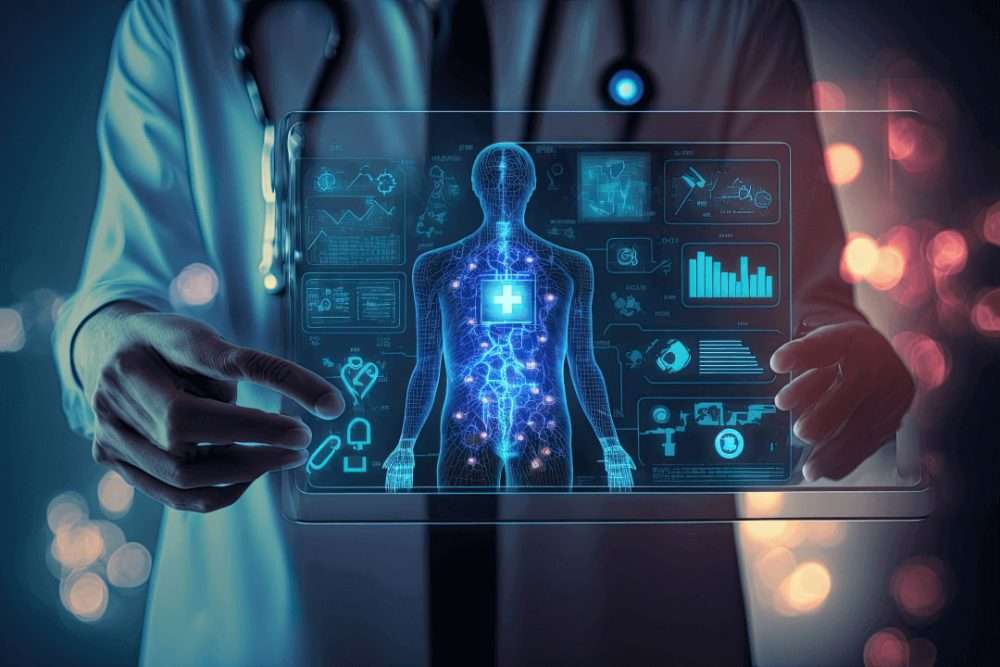Saif Abdul Hussein Mohammed Mahdy
Dr. Sada Fayidh mohammed
Introduction
We have already seen the power of artificial intelligence (AI) in a number of fields and, healthcare is not far behind. One of its most exciting applications is in medical imaging. Medical image technology related to AI (artificial intelligence) and the most progressive algorithm like deep learning approach to diagnose the disease. Accuracy and precision provided by AI in Medical Imaging particularly essential for early detection, accurate diagnosis and effective treatment planning ultimately improving patient outcomes.
The Role of AI in Medical Imaging
With perfect accuracy, AI algorithms are able then to interpret tens of thousands of images; these include x-rays but besides them also CT scans, MRIs and ultrasounds. AI used to recognize patterns and abnormalities that are impossible for human eyes, this way it applies a more informed diagnosis by healthcare professionals. It could redefine healthcare by allowing for earlier detection, lower misdiagnosis rates and better patient care overall.
Importance of accurate diagnosis
Correct diagnosis is fundamental in proper health care efforts. Timely diagnosis of diseases plays major role in enhancing treatment outcomes and reducing death rates. The use of AI-powered medical imaging technology allows forGs attentive to automatically improving the diagnostic accuracy.
• Increased Sensitivity: With AI, the algorithms are able to detect small subtle findings that can be overlooked by human observers, ultimately resulting in lead times between diagnosis and intervention.
• Decrease Interobserver Variability: AI will decrease the variation that can exist between different human readers, to provide more reliable and consistent diagnoses.
• Improving specificity: AI can identify the difference between benign and malignant, which in turn reduces unnecessary scans or biopsies, ultimately driving better patient outcomes.
Applications of AI in Medical Imaging
AI-enabled medical imaging has been used in different diseases and conditions like:
• AI can help in identifying of different cancer such as breast, lung, prostate and colon cancer through processing medical images for suspicious anomalies.
• AI Diagnosis of Cardiovascular Disease: Pictures of the heart and blood vessels are processed to detect coronary artery disease or heart failure
• Neurological Disorders: AI can help identify signs of neurological disorders (e.g. Alzheimer’s disease, Parkinson’s disease, or stroke) in brain images.
• Orthopedics: The diagnosis and assessment of the orthopedic cases, including fractures, disorders of joints and vertebrae are facilitated through image analysis.
Challenges and Future Directions
Despite its substantial promise, the implementation of AI-based medical imaging technology is not free of challenges. These include the requirement of sizeable datasets to train the performance of algorithms, question of privacy of data, and risk of bias inherent in AI models. However, the field of AI is maturing in its research efforts to address these challenges, and we see improvements in more advanced and effective applications in medical imaging approaches to both research and clinical applications.
AI Utilized in Statistical Analysis
Statistical analysis has been transformed by AI, which has improved the accuracy and effectiveness of data interpretation in a variety of fields. The ability of AI to handle massive datasets, frequently referred to as “big data,” when traditional statistical methods fail, is one of the technology’s most significant contributions to statistical analysis. Big datasets can contain patterns, trends, and relationships that are not always instantly visible using traditional approaches. These can be automatically detected using AI-powered algorithms, such machine learning and deep learning. In industries like marketing, finance, and healthcare, this capacity greatly improves decision-making processes.
Artificial intelligence (AI) may also automate predictive modeling and hypothesis testing. Within the medical field, artificial intelligence (AI) has proven to be useful in forecasting patient results, evaluating therapy efficacy,
Statistical Applications in Medicine Using AI-Powered Analysis
Artificial intelligence (AI)-driven statistical analysis has revolutionized medicine, especially in terms of improving the precision and speed of data-driven decision-making. For instance, AI can evaluate massive patient response and medical history information in clinical trials, making it easier for researchers to find statistically significant results. This shortens the time needed for the processes of drug approval and development. Personalized treatment regimens are made possible by AI systems’ ability to analyze patient data statistically in real time. AI can identify which therapies are statistically most beneficial for various demographic groups by studying trends across huge populations. This improves tailored care and lowers the risk of unfavorable consequences.
AI is now being utilized in epidemiology to forecast epidemic trends and model the transmission of diseases. When there are worldwide health emergencies, as the COVID-19 pandemic, AI-powered statistical models
Conclusion
1- AI-based medical imaging technology is a substantial advancement of healthcare. It improves diagnostic accuracy by facilitating a greater supply of early detection diagnostic information and reducing the rate of misdiagnosis. It can thus offer beneficial outcomes for patients and provide grounds for completely changing the landscape of diagnosing and treating medical conditions. While we note that AI technology itself in the medical imaging field has advanced considerably over the past few decades, we also know that the future application in this and other healthcare areas will be even more innovative.
2- The integration of AI-powered technology into statistical analysis, particularly in the field of medicine, has brought about a paradigm shift in how data is interpreted and utilized. AI’s ability to process vast amounts of data, detect subtle patterns, and deliver highly accurate predictions significantly enhances traditional statistical methods. In medical imaging, statistical analysis, and clinical decision-making, AI not only improves diagnostic precision but also allows for earlier interventions, more personalized treatments, and better health outcomes overall. As AI continues to evolve, its applications in both statistical analysis and medicine will undoubtedly expand, driving further innovation and setting new standards for efficiency and accuracy in healthcare.
Sources:
• BGO Software: https://www.bgosoftware.com/blog/the-role-of-ai-in-medical-imaging/
• Onix Networking: https://www.metrostar.com/onyx-ml-tool/
• Spectral AI: https://www.spectral-ai.com/
• ResearchGate: https://pubmed.ncbi.nlm.nih.gov/38136026/
• IEEE EMBS: https://ieeexplore.ieee.org/document/10182498/
• Medium: https://medium.com/@muhammaddawoodaslam/applications-of-ai-in-medical-imaging-9eb490f8a99f































































